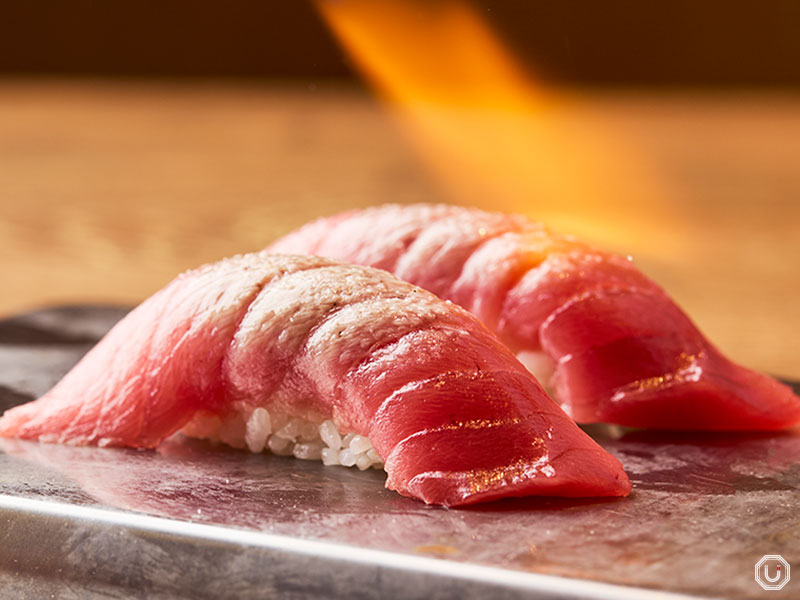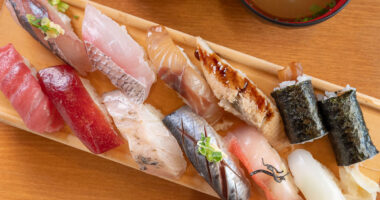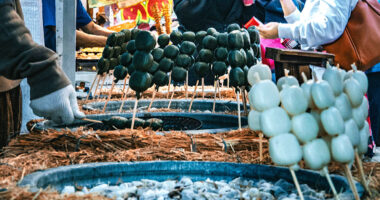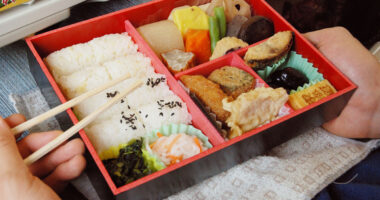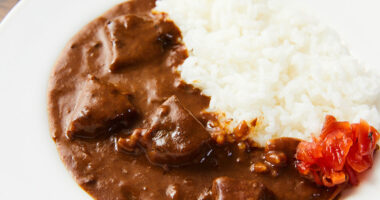Ōtoro (extra fatty tuna) is renowned as one of the most luxurious ingredients in Japanese high-end sushi. Sourced from the tuna belly, this exceptional cut captivates food connoisseurs with its rich fat and melt-in-the-mouth texture.
Globally famous, this rare cut, comprising only a small fraction of a maguro (tuna), is a hallmark of Japanese culinary culture due to its beautiful marbling and intense flavor.
Before diving deeper into otoro, if you’re interested in broader information on maguro types or dining options, check out this related article.
This article covers otoro’s essentials, its differences from other cuts, why it’s so expensive, and why it’s a must-try during your Japan visit.
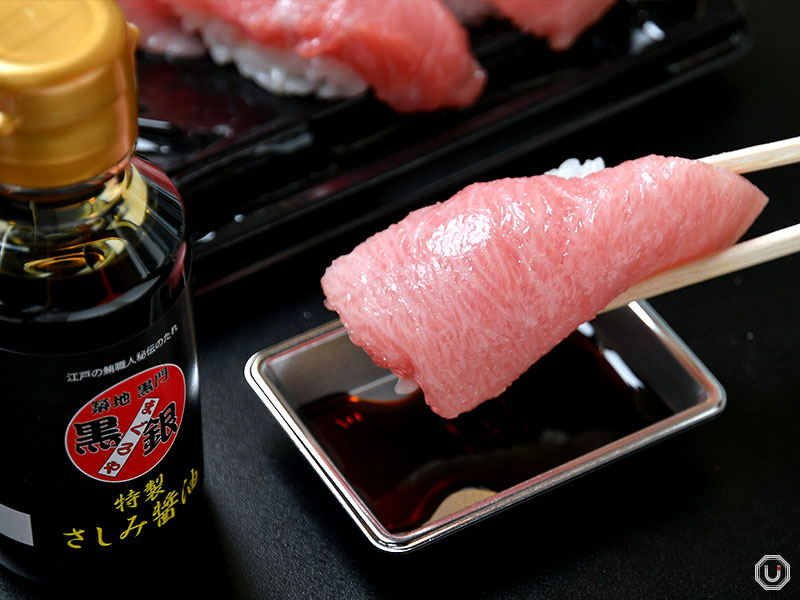
Ōtoro from ‘premium toro trio nigiri’ at Maguroya Kurogin
Otoro: Understanding its basic characteristics
Otoro refers to the fattiest part of the maguro’s belly, closest to the head.
Commonly translated in English as “extra fatty tuna,” its abundant fat makes it a premium ingredient.
Otoro’s visual traits
Otoro comes from muscle tissue supporting the fish’s swimming, yet its low activity level results in beautiful, marbled fat accumulation.
Its color ranges from pale pink to near-white, with intricate fat veins resembling high-grade wagyu beef, exuding luxury even at a glance.
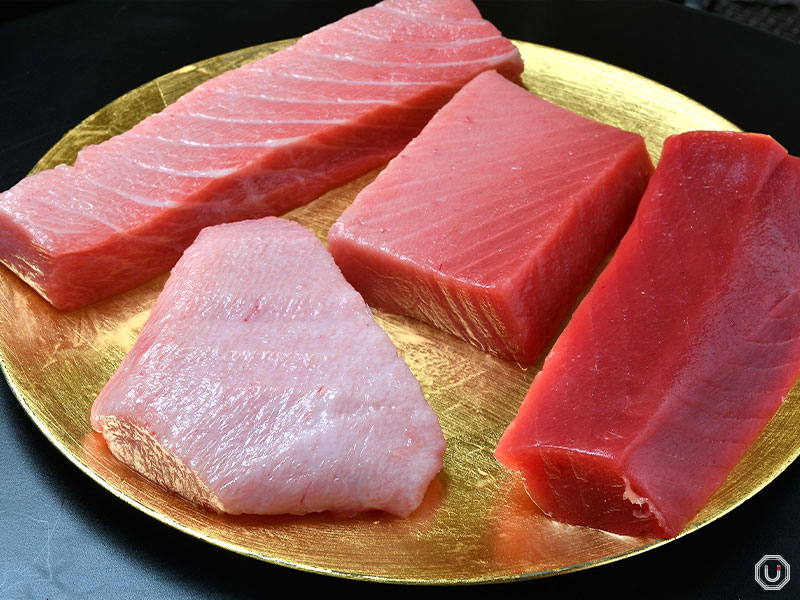
(top left) otoro, (top right) chutoro, (bottom left) kamatoro, (bottom right) akami (lean tuna) at Maguroya Kurogin
Otoro’s texture and flavor
Otoro’s hallmark is its smooth, melt-in-the-mouth texture and rich yet refined fat sweetness. Requiring little chewing, it dissolves on the tongue, offering a unique experience unmatched by other ingredients.
Lacking fishy odors, otoro delivers natural sweetness and umami that fill the mouth. Often compared to butter or foie gras, its rich flavor elevates this seafood to extraordinary heights.
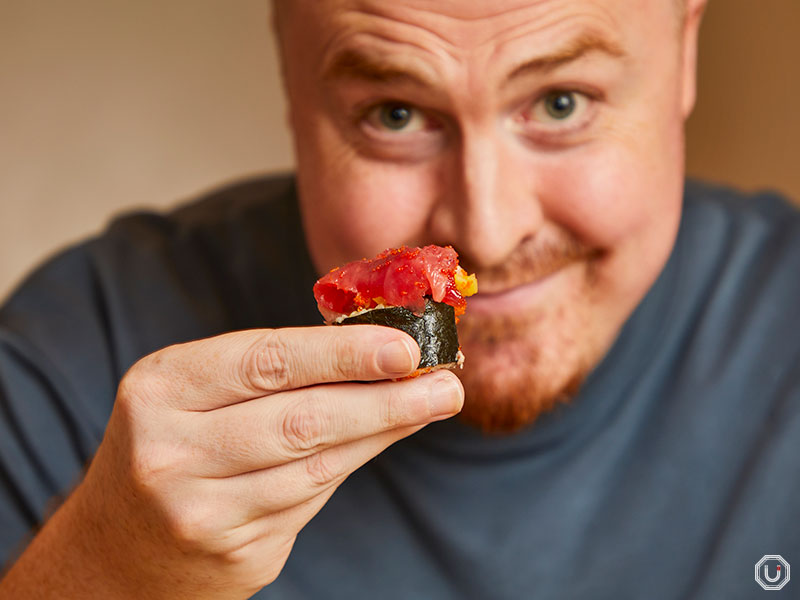
Umami bites staff enjoying maguro sushi at Sakanaumai
Otoro vs. other maguro cuts
Maguro offers various cuts, each with distinct traits. Understanding these differences highlights otoro’s unique value.
Akami characteristics
Akami (lean meat), typically from the back or tail, is a lean cut with rich fish umami and a clean aftertaste. Its deep red color and firm texture provide a satisfying bite.
Affordable and widely available, akami is ideal for maguro beginners or those who prefer less fat and a pure fish flavor.
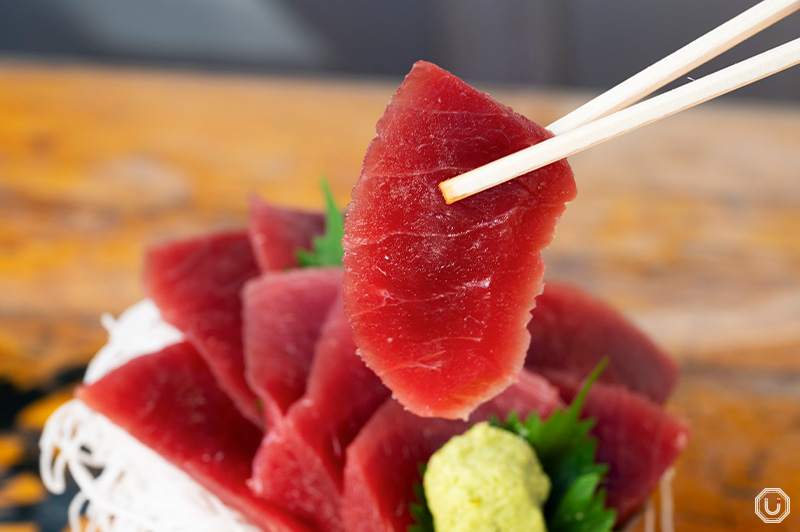
Akami sashimi from TAKAMARU FRESH FISH SHOP
Chūtoro’s appeal
Chūtoro, from the mid-belly, balances akami and otoro traits.
With moderate fat and fish umami, chūtoro is a popular, well-balanced cut loved by sushi enthusiasts.
Less rich than otoro but more flavorful than akami, chūtoro is approachable for high-end sushi newcomers and offers excellent value.

Chutoro sashimi at OH! TORO KITCHEN
Cut comparison table
The table below compares maguro’s main cuts.
| Cut | Fat Content | Main Features | Price Range |
|---|---|---|---|
| Akami | Low | Rich fish umami, clean taste | Relatively affordable |
| Chutoro | Moderate | Balanced fat and umami | Mid-range |
| Otoro | High | Melt-in-the-mouth, rich fat | Premium |
As the table shows, otoro stands out as the premium cut in fat content, flavor, and price, truly the ‘king of maguro.’ Each cut has its charm, but otoro reigns supreme.
Why otoro is so expensive
Otoro’s high price isn’t just due to its deliciousness.
Its cost stems from a complex interplay of rarity, quality control, and market dynamics.
Limited yield per fish
From a single kuro-maguro (Pacific bluefin tuna), otoro constitutes just a few percent of the fish. Even a 200 kg (441 lb) maguro yields only a few kilograms of otoro.
This scarcity is a key driver of otoro’s high value. Variations in fat distribution and color further elevate the rarity of top-quality pieces.

Freshly sourced wild hon-maguro at Sashimi Bar Kashigashira
Fishing quotas and international regulations
Kuro-maguro faces strict international fishing quotas as a protected species.
Limited quotas for sustainable fishing restrict supply, increasing otoro’s rarity and value.
Kuro-maguro, in particular, is tightly managed, keeping market supply low and driving up prices.
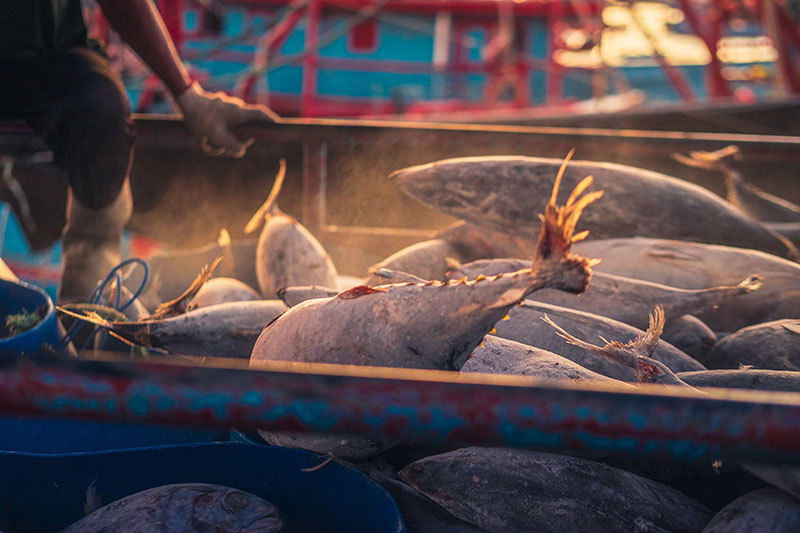
Photo for illustrative purposes
Toyosu market auctions
At Tokyo’s Toyosu Market, premium maguro auctions occur daily, with top specimens fetching tens of millions of yen.
The New Year’s first auction often sees maguro sold for hundreds of millions, making global headlines.
This competitive market environment significantly influences otoro’s pricing, as wholesalers and sushi restaurants vie for the best cuts.
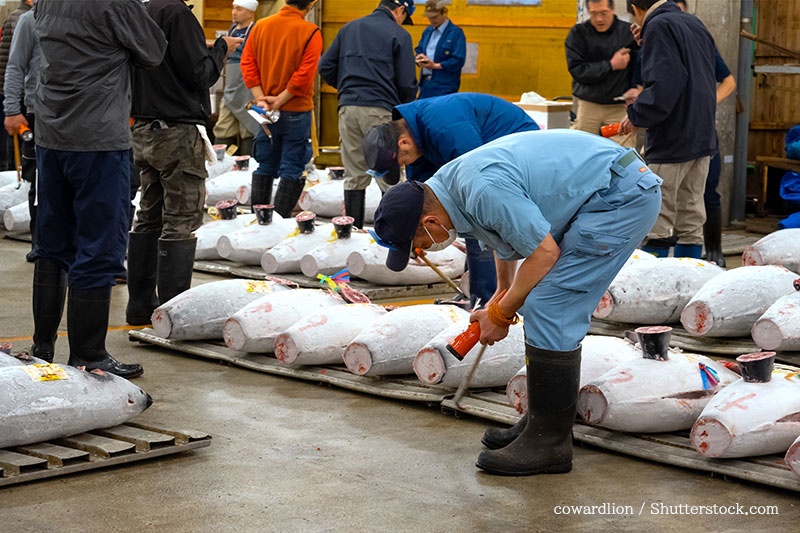
Photo for illustrative purposes
Artisanal skill and quality control
Otoro’s value depends on meticulous quality control from fishing to serving. Fishermen’s techniques, temperature-controlled logistics, and sushi chefs’ knife skills are all critical.
The chef’s expertise is vital, requiring years of experience to maximize otoro’s delicate texture and flavor. These human costs contribute to its high price.
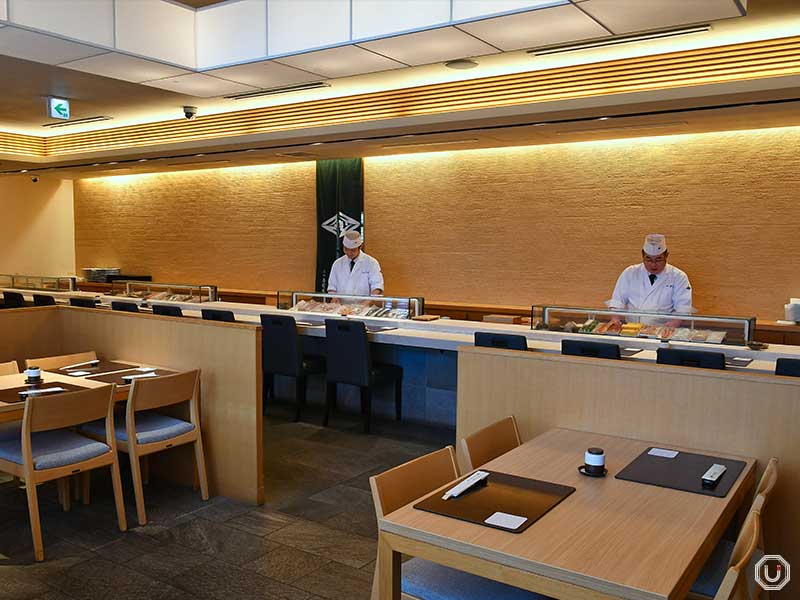
Sushi chef at Sushi Iwa
Savoring otoro
To fully appreciate otoro’s charm, understanding its preparation methods is key, from traditional to modern approaches.
Nigiri sushi
The quintessential way to enjoy otoro is as nigiri sushi, with a thick slice atop vinegared rice. This simple preparation highlights the ingredient’s natural flavor.
A small dab of wasabi may be included, but the focus remains on otoro’s pure taste.
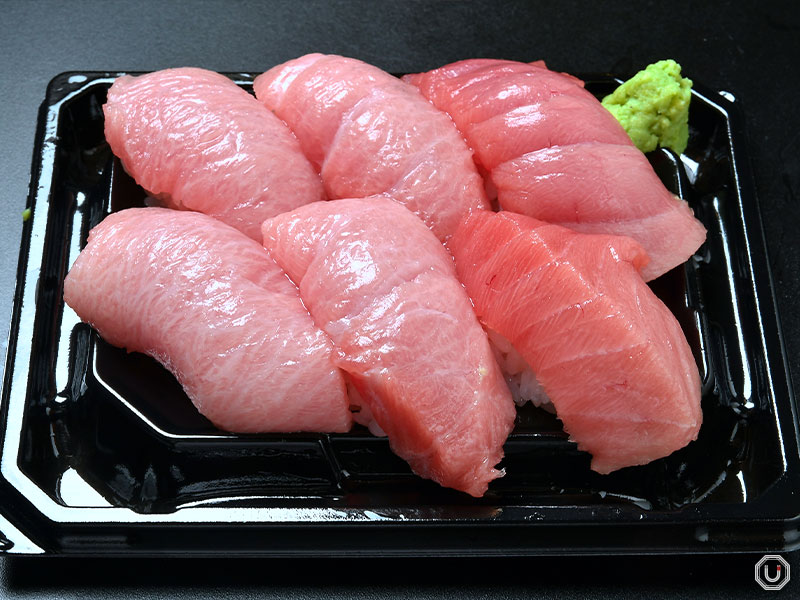
Special Fatty tuna/Very Fatty tuna/Medium tuna at Maguroya Kurogin
Sashimi enjoyment
Otoro as sashimi offers a direct taste of its essence.
Typically paired with soy sauce and wasabi, high-quality otoro shines even without condiments.
The cut’s angle and thickness, expertly handled by skilled chefs, enhance its melt-in-the-mouth texture.
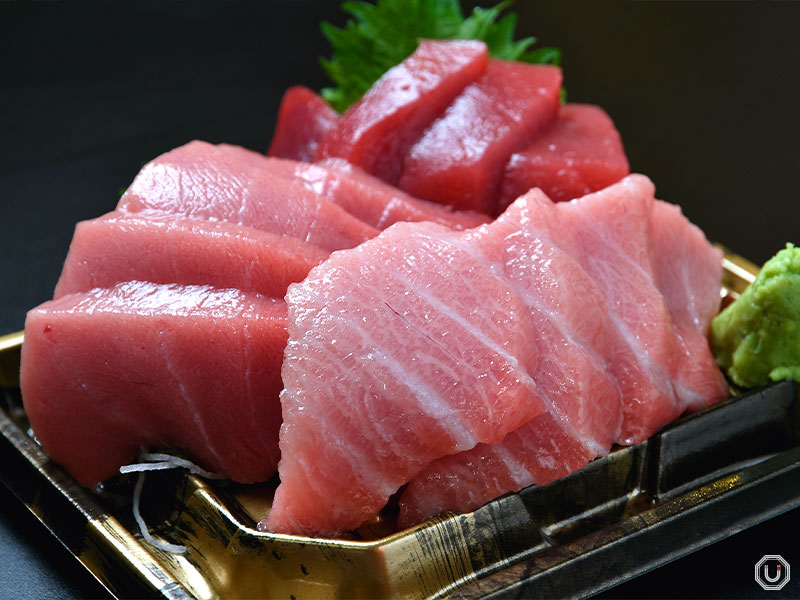
Special Fatty tuna/Very Fatty tuna/Medium tuna at Maguroya Kurogin
Aburi (seared) appeal
The increasingly popular aburi (seared) sushi method lightly sears otoro’s surface, adding a smoky aroma and enhancing fat sweetness.
Searing creates a textural contrast, enriching the flavor with a warm-cool interplay between otoro and rice.
High-end restaurant flair
Top-tier sushi restaurants may elevate otoro with caviar, gold leaf, or custom sauces, enhancing both aesthetics and flavor complexity.
Some adjust serving temperature by season—warmer in winter, colder in summer—to optimize the experience.
Why you should try otoro in Japan
For foreign tourists, otoro is more than food—it’s a profound way to experience Japanese culinary culture.
Japanese craftsmanship and omotenashi
High-end sushi restaurants showcase the artistry of seasoned chefs. From knife work to ingredient handling, their craft reflects Japan’s artisanal spirit, akin to enjoying a masterpiece.
At counter seats, you can watch chefs meticulously craft each piece, sensing their respect for ingredients.
The spirit of omotenashi (hospitality)—tailoring service to individual preferences—ensures an exceptional experience, even with language barriers.
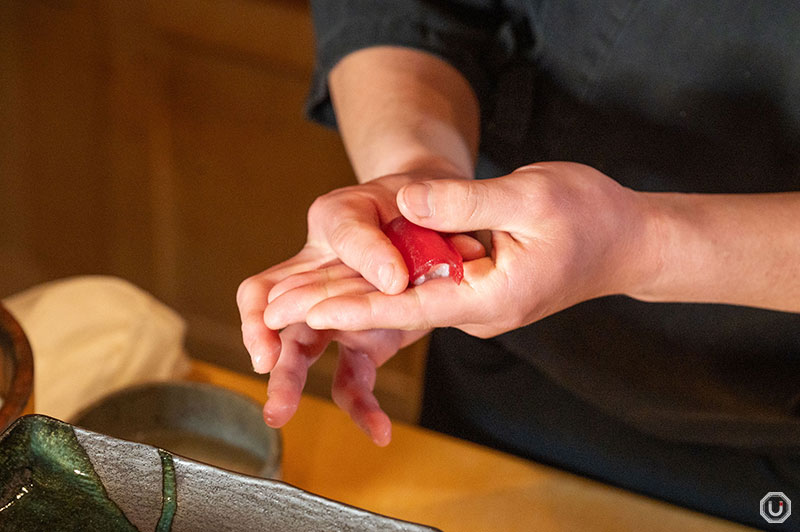
Sushi chef at SUSHI Gonpachi Nishi-Azabu
Unique sushi experience in Japan
While otoro is now served at upscale restaurants abroad, the authenticity of otoro served in Japan is mostly unmatched, with virtually unparalleled freshness, quality, and technique.
Just a single piece can leave a lasting impression, making it a highlight of your Japan trip. Even seasoned diners of Japanese cuisine abroad will find Japan’s otoro unforgettable.
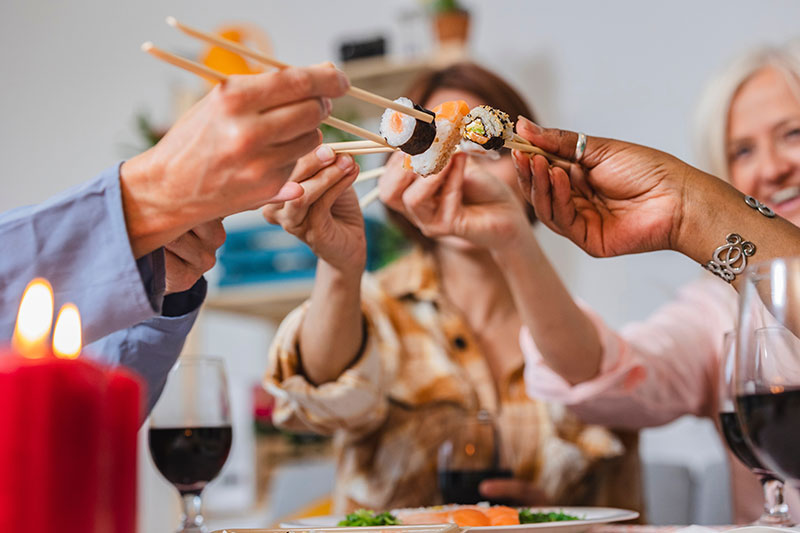
Photo for illustrative purposes
Summary
Otoro, maguro’s fattiest and rarest cut, is a pinnacle of Japanese sushi culture. Its rich, melt-in-the-mouth texture and refined sweetness offer an unforgettable experience.
Its high price stems from limited yield, strict fishing quotas, competitive auctions, and artisanal expertise, yet its value matches its extraordinary flavor.
During your Japan visit, savor otoro at a high-end sushi restaurant for a taste of craftsmanship and omotenashi, creating a cherished travel memory.

